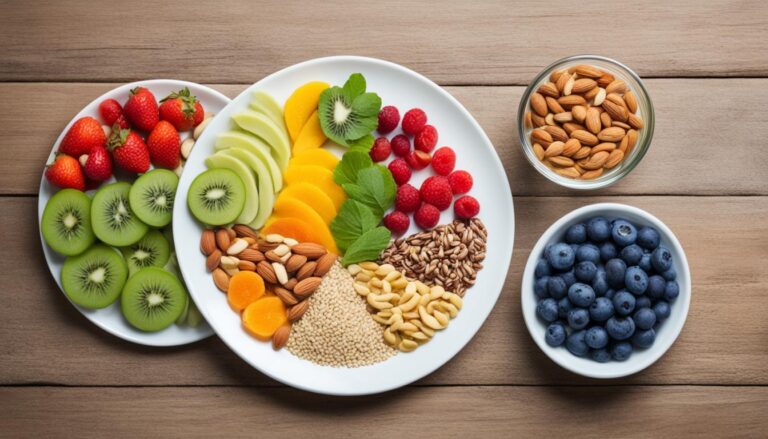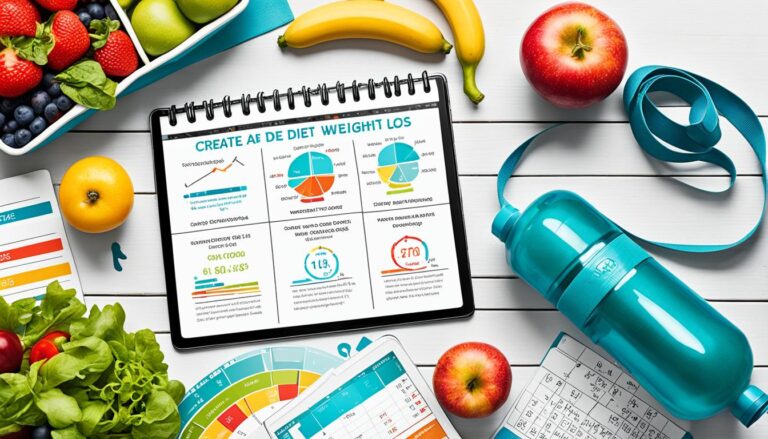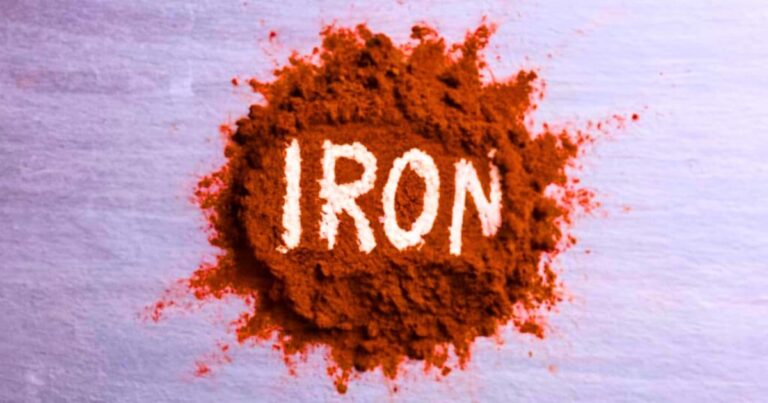Could the secret to losing weight be choosing the right carbs? Many diets tell you to cut carbs, but some carbs can help with weight management. They work best when part of a balanced, calorie-controlled diet. But what carbs are the best for losing weight, and how can you add them to your diet?
Key Takeaways
- Carbohydrates are a key nutrient, and some carbs can help with weight loss in a healthy diet.
- Foods high in fiber like whole grains, fruits, veggies, and legumes keep you full and happy.
- Processed carbs without fiber and nutrients can lead to weight gain and should be limited.
- Eating carbs with protein helps control blood sugar and reduces hunger.
- Switching carb intake throughout the week, known as carb cycling, might be good for some.
Understanding Good and Bad Carbs
Not all carbs are the same when it comes to weight loss. They fall into two main groups: simple carbs and complex carbs. Knowing the difference helps you make better choices for your weight.
Difference Between Simple and Complex Carbohydrates
Simple carbs, or “bad” carbs, quickly raise blood sugar levels. They include white bread, pastries, and sugary drinks. On the other hand, complex carbs, or “good” carbs, digest slowly and provide steady energy. They are found in whole grains, fruits, and vegetables.
Role of Fiber and Nutrient Density in Healthy Carbs
The main difference between simple and complex carbs is their nutrient density and fiber. Complex carbs are full of vitamins, minerals, and dietary fiber. This makes you feel full and satisfied. Simple carbs, however, are often empty calories that can lead to weight gain.

Eating more complex carbs and fiber-rich foods can change your weight loss game. These foods help control blood sugar, support gut health, and give you energy all day. Choosing good carbs helps you enjoy carbs while working on your weight.
Whole Grains: A Top Choice for Weight Loss
Whole grains like brown rice, oatmeal, and quinoa are great for weight management. They are full of fiber, which helps you feel full. Eating more whole grains can lead to a healthier weight.
Benefits of Whole Grains for Weight Management
Whole grains are full of fiber, which is good for weight loss and health. A cup of steel-cut oats has 8 grams of fiber, which is a lot. They also have amino acids, antioxidants, and prebiotics that help control hunger and support the gut.
Also, whole grains have a lower glycemic index than refined grains. This means they keep blood sugar stable and help with insulin control. Both are key for managing weight.
Incorporating Whole Grains into Your Diet
Adding whole grains to your diet is simple. Try oatmeal for breakfast, quinoa with dinner, or brown rice in your meals. Try different whole grains like barley, bulgur, or millet to keep things interesting.
“For optimal health benefits, it is recommended to focus on adding nutrient-rich foods like oats to the diet for weight loss rather than solely restricting carbohydrates.”
By making whole grains a key part of your diet, you’ll support your weight loss goals. You’ll also enjoy the many health benefits these foods offer.
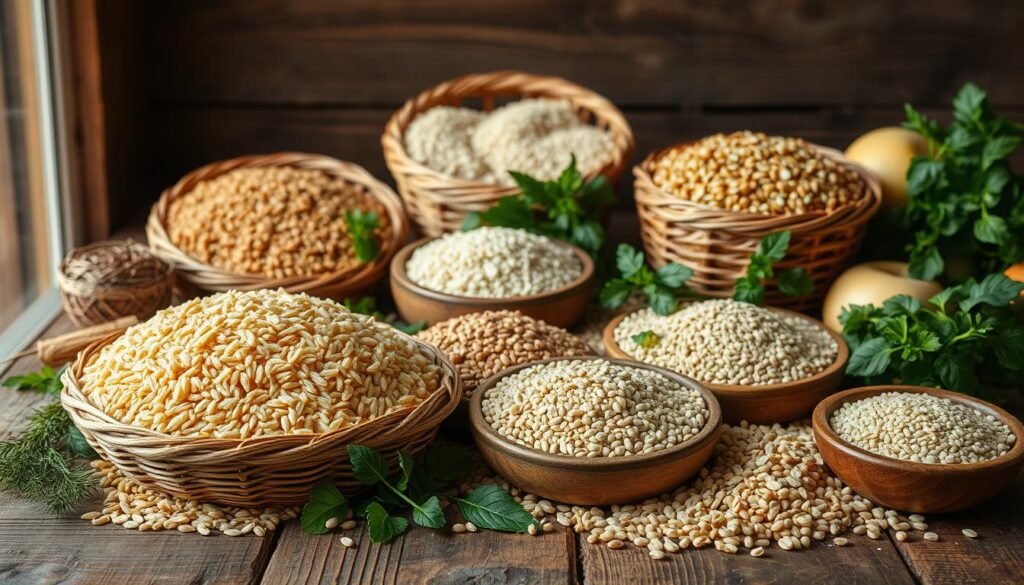
What carb is best for weight loss?
Whole Grains: A Dietitian’s Top Pick for Weight Loss
Registered dietitian Caroline Susie says whole grains are the best carbs for losing weight. Foods like brown rice and whole grain pasta are full of fiber. This fiber helps you feel full and stay on a healthy diet.
Whole grains are not only good for weight loss but also for your overall health. They are nutritious and satisfying, making them a great choice for long-term weight loss.
A 2023 review in BMJ found that fiber from whole grains, fruits, and veggies helps with weight loss. A 2020 review in Frontiers in Nutrition also showed that pasta eaters get more fiber, folate, iron, magnesium, and vitamin E. These nutrients are key for health and losing weight.
Carbs are vital for feeling full and avoiding unhealthy cravings. Complex carbohydrates digest slowly, keeping you full longer. Dietary fiber also helps with digestion and feeling full.
“If I had to choose a specific type of carbohydrate that was best for weight loss, I would recommend whole grains.” – Caroline Susie, Registered Dietitian

Adding whole grains to your diet can help you lose weight and keep it off. Their fiber and nutrient density make them a top choice for dietitians.
Carb Cycling and Weight Loss
Carb cycling is a smart way to manage weight. It involves switching between eating more and less carbs. This helps the body burn fat for energy.
Understanding Carb Cycling for Weight Management
When carbs are low, the body uses fat for energy, leading to weight loss. On high-carb days, glycogen levels go up. This helps muscles recover and grow. This cycle keeps hormones and metabolism balanced, key for lasting weight loss.
Experts say to get 50% to 55% of daily calories from carbs. Proteins should be 10% to 15%, and fats less than 30%. On high-carb days, eat 2 to 2.5 grams of carbs per pound of body weight. On low-carb days, aim for 0.5 grams per pound.
A good carb cycling plan includes 100-125 grams of carbs on low-carb days. On high-carb days, eat 175-275 grams, based on activity. Focus on whole grains, fruits, and veggies. Avoid refined carbs and sugars.
Carb cycling is safe for a short time. But, it’s important to eat healthily to keep blood pressure and sugar levels stable. People with adrenal issues should talk to a doctor before starting.
By understanding carb cycling, you can use it to manage weight. It supports your metabolic health too.
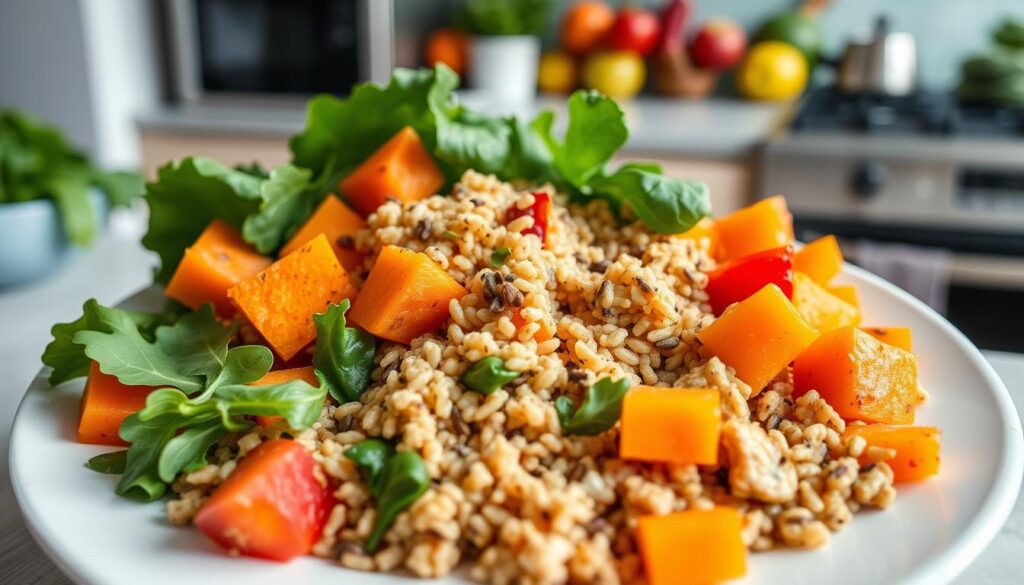
Low-Carb Diets: Pros and Cons
Low-carb diets are popular for weight loss because they work fast. But, cutting out carbs completely might not be good for the long run. These diets can make you lose water weight, not fat. When you start eating carbs again, the weight often comes back.
Thinking about sustainability and long-term health is key. Low-carb diets can miss out on important nutrients from foods like whole grains, fruits, and veggies. This can lead to health problems and nutrient deficiencies.
But, not all carbs are bad. Eating complex, nutrient-dense carbohydrates in a balanced diet is smart. These include whole grains, legumes, and some fruits and veggies.
| Pros of Low-Carb Diets | Cons of Low-Carb Diets |
|---|---|
|
|
In conclusion, a balanced diet with healthy carbs is better for keeping weight off and staying healthy. It’s all about eating whole-food carbohydrates, not processed ones.

Glycemic Index and Weight Loss
The glycemic index helps in choosing carbs for weight loss. It shows how fast a food raises blood sugar. Foods with lower GI values digest slower, which helps control blood sugar and insulin.
This approach keeps you feeling full longer. It also supports your weight loss goals.
Role of the Glycemic Index in Carb Selection
High-GI foods like white bread and refined cereals digest quickly. They cause blood sugar and insulin spikes. On the other hand, low-GI foods like whole grains, fruits, and veggies digest slower.
This leads to a gradual increase in blood sugar. Choosing these carbs makes you feel fuller. It also prevents energy crashes from blood sugar spikes.
| Glycemic Index Ranking | GI Value | Examples |
|---|---|---|
| Low | 55 or less | Whole grains, fruits, vegetables, legumes |
| Medium | 56 to 69 | Whole wheat bread, brown rice, bananas |
| High | 70 or more | White bread, white rice, sugary cereals |
Research shows a low-GI diet can help lose weight. It also lowers the risk of heart disease and type 2 diabetes. By choosing quality carbs, you support your health and weight goals.
“Incorporating low-GI and higher protein foods into your daily diet can facilitate weight loss in a smart and sustainable way.”
Portion Control and Balanced Meals
For lasting weight loss, it’s not just about healthy carbs. You also need to control portions and eat balanced meals. Eating carbs in moderation with protein can make you feel full. This helps avoid overeating and keeps calorie intake in check.
Combining Carbs with Protein for Satiety
Mixing complex carbs like whole grains with lean proteins like eggs or chicken is smart for weight control. This balance helps manage hunger and keeps you feeling full. It makes it easier to eat the right amount of food.
- Research shows that plate size, shape, and color affect how much food looks appealing.
- A 2023 study found that using a heavy serving bowl can make you serve yourself more.
- A 2023 study with Iranian students showed that plate size and color influence how full you feel.
Controlling portions is key to losing weight. You can do this with portion control plates, measuring food, and eating mindfully.
“The ideal portion of carbohydrates in a meal is about a quarter of the plate, according to a 2022 review.”
By focusing on portion control and balancing carbs and protein, you can improve your weight loss. This approach helps you stay healthy and maintain a balanced lifestyle.
Nutrient-Dense Carb Sources
Not all carbs are the same when it comes to weight loss. Fruits, vegetables, and legumes are great for your health and fitness. They offer nutrient-dense carbs.
Fruits and Vegetables: Carbs with Benefits
Fruits and vegetables are full of complex carbs, fiber, vitamins, minerals, and antioxidants. They help you feel full and give you energy. For example, a large banana has 31 grams of carbs and is rich in potassium and vitamins B6 and C.
A half-cup of mashed sweet potatoes has about 21 grams of carbs. It’s also full of vitamin A and other nutrients.
Legumes: A Fiber-Filled Carb Option
Legumes like beans, lentils, and chickpeas are also good for you. They are high in fiber, which helps control blood sugar and keeps you full. A cup of cooked kidney beans has 40 grams of carbs, 15 grams of protein, and 13 grams of fiber.
Eating a variety of these carbs can help with weight loss. They also offer many health benefits.
| Food | Carb Content | Additional Nutrients |
|---|---|---|
| Sweet Potato | 20.7 g per 1/2 cup mashed | Vitamin A, Vitamin C, Potassium |
| Quinoa | 39.4 g per 1 cup cooked | Protein, Fiber |
| Lentils | 39.8 g per 1 cup cooked | Protein, Fiber |
| Blueberries | 14.5 g per 100 g | Vitamin C, Antioxidants |
| Grapefruit | 8 g per 100 g | Vitamin C, Antioxidants |
“Incorporating a variety of nutrient-dense carb sources, such as fruits, vegetables, and legumes, can be a valuable strategy for reaching your weight loss goals.”
Conclusion
In conclusion, eating healthy carbs like whole grains, fruits, veggies, and legumes helps with weight loss. These nutrient-dense carb sources are full of fiber. This fiber makes you feel full and happy.
By choosing the right carbs and eating them in balance, you can reach your weight loss goals. This approach also keeps you healthy for a long time.
Studies show that low-carb diets lead to more weight loss than low-fat diets. They show better weight loss in total body weight and belly fat. Plus, they improve heart health.
But, it’s key to pick the right carbs. High-fiber, nutrient-rich carbs offer more health benefits than just weight loss.
Knowing the difference between simple and complex carbs is important. A balanced diet with healthy carbs is a sustainable way to lose weight. It also boosts overall health.
The main thing is to make smart choices, listen to your body, and find a diet that fits you. This way, you can achieve your weight loss goals and stay healthy.
